A Photo Exhibit You Should Visit: LeRoy Grannis “Cult of Culture” In Long Beach
Pay homage to a (if not the) Godfather of surf photography.
Yesterday evening, a sorbet sunset rippled off the sea, calmed by the many oil rigs of Long Beach Harbor. Overlooking the day’s end, at the Long Beach Museum of Art, a show featuring LeRoy Grannis’ photography opened.
First, a bit of history:
LeRoy was born (1917) and raised in Hermosa Beach, California. He’s a (if not the) godfather of surf photography and his work stands the trial of time. It’s as good as the medium gets. LeRoy was a top surfer in the ’30s, in the days of balsa boards, 20 years before the invention of the first wetsuit. However, he’s most known for his surf photography in the ’60s. In 1964, he co-founded International Surfing, which later became Surfing Magazine.
In 2011, Mr. Grannis died of natural causes. He was 93.
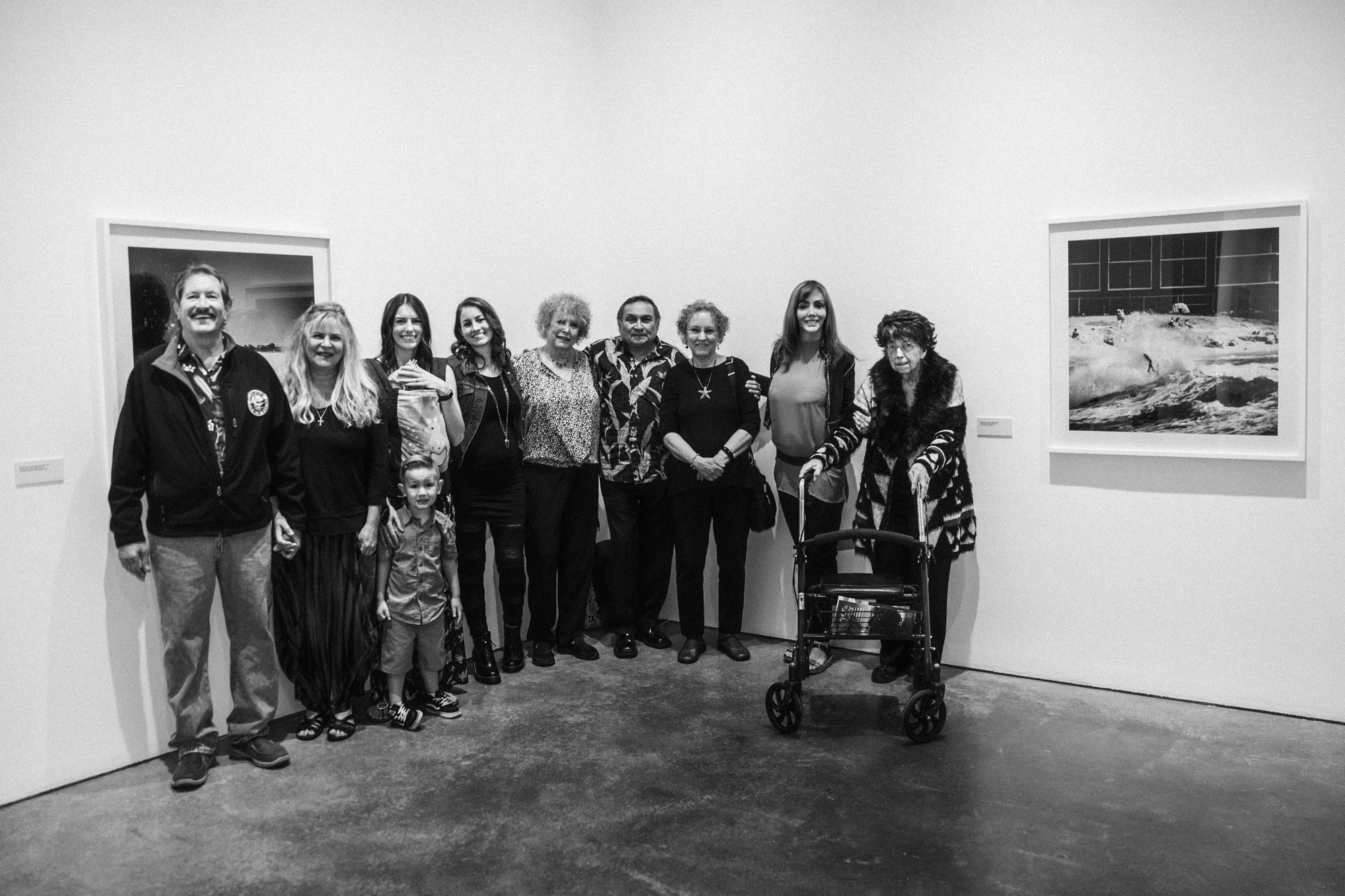
The Grannis Family in attendance.
Grannis’ shots are iconic in the accurate sense of the word. If you’ve spent any time in California or Hawaii, you’ve seen his work, perhaps unbeknownst to you, in restaurants, surf shops, dive bars or framed up on a family member or friend’s wall space. Most familiar are the Duke Finalists of 1969 and Dewey Webber’s black and white cutback in Hermosa, shot from the water in 1966.
Last night, around 5 pm, the show opened for the members of the museum. Prior to the opening and subsequent raiding of the open bar and hor de’voeures that left no cheese cube uneaten and no cracker un-salami’d; photographer Zak Bush and I had a look at the gallery, empty. The median age at the cocktail hour hovered around 55. The vibe was that of a wine mixer. The event was a fresh break from the usual industry bro-down.
We were out of place, delightfully.
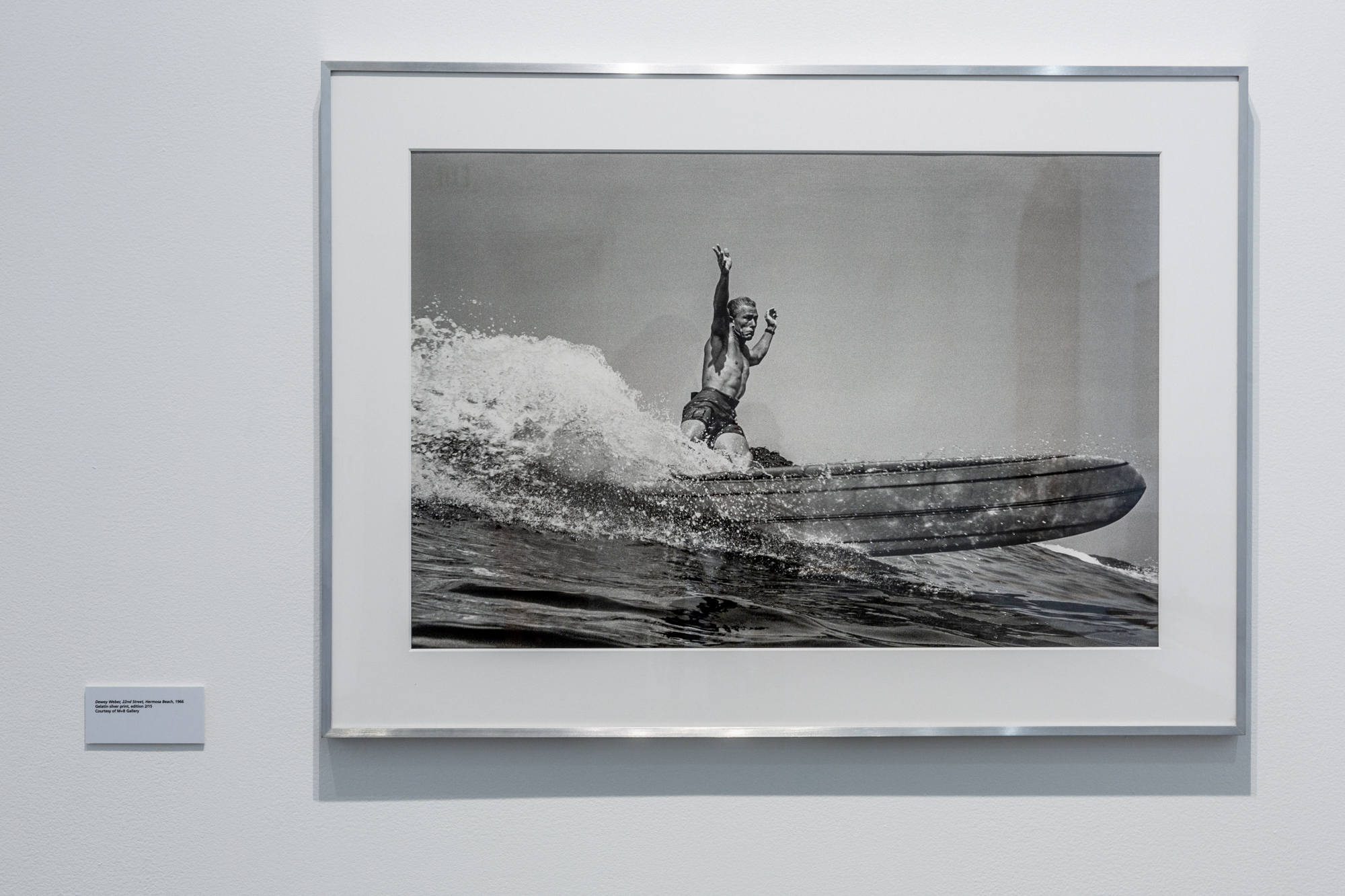
Dewey Weber as shot from the water, 1966.
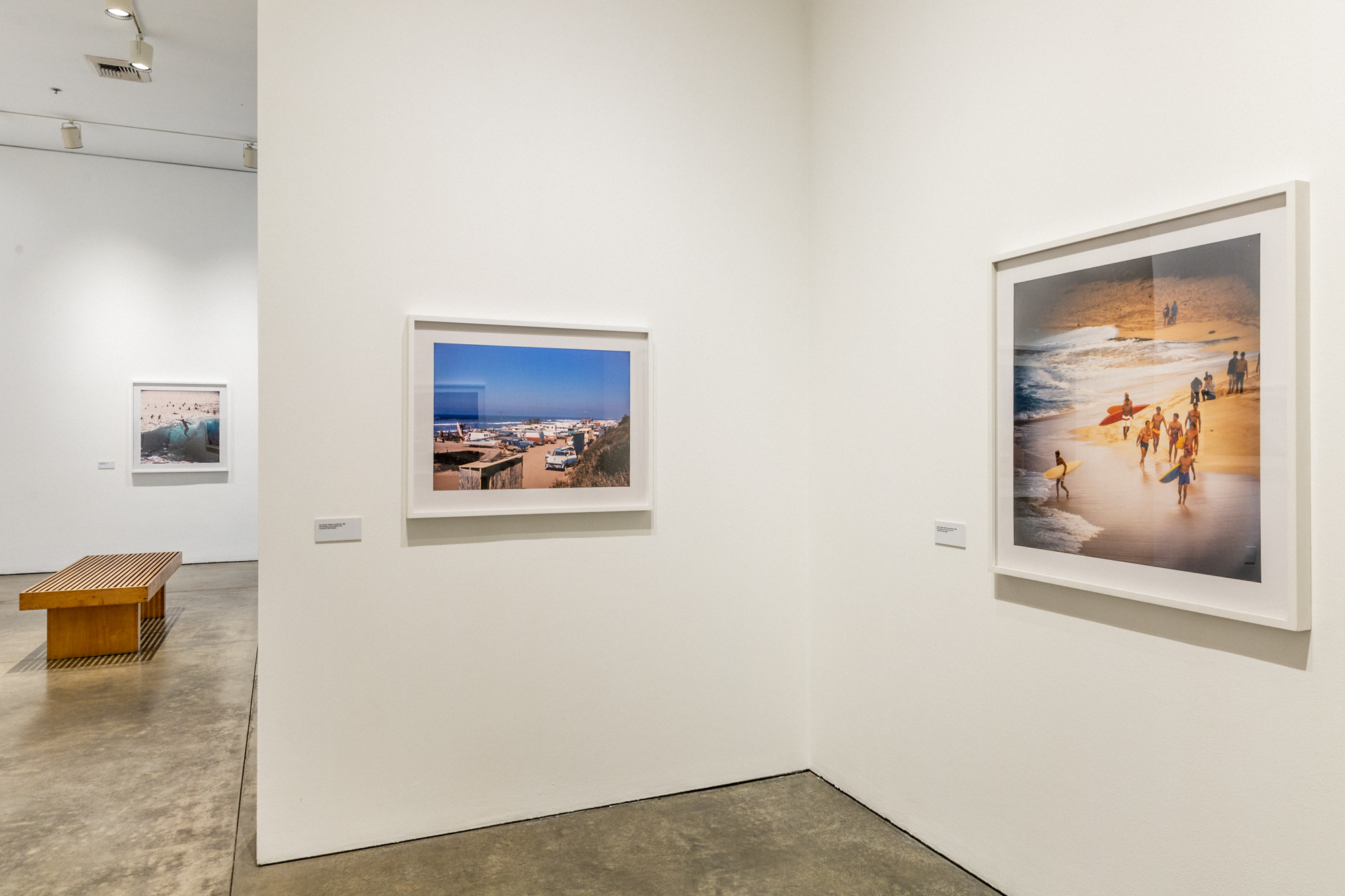
The Duke Finalists to the right, a portrait of Malibu in the middle and a slider at Makaha left back. All taken during the 1960s.
The gallery itself featured stunning surf and “lifestyle” photography. In glass cases sat LeRoy’s cameras, most eye-catching was a lens better known as the Century lens (which was the lens in surf photography in the ’60s) plus much more from the man’s life. The lens itself spans over a yard in length and resembles heavy artillery reserved for times of war. LeRoy, in the ’60s, shot from the water. Due to the lack of water housing, and being four decades before digital ruled the world, he had to paddle his equipment out and sit in the channel in order to capture imagery on par with the best surf photography today.
In one of the displays sat a wooden box, fiberglassed and sealed with rubber. It contained two latches and was built for LeRoy by the king of cosmic, Sir George Greenough. With the case, LeRoy could keep his cameras, lenses and rolls of film safe from water damage while putting in marathon sessions, shooting the likes of Dewey Weber, Miki Dora, and Greg Noll from Hermosa to Malibu to the North Shore.
LeRoy’s son, John, was in attendance with his family. After rounding up the Grannis lineage for a group photo in the most tranquil corner of the gallery (a difficult feat, as the gallery was inundated), John spent some time allowing us to get to know him and his father.
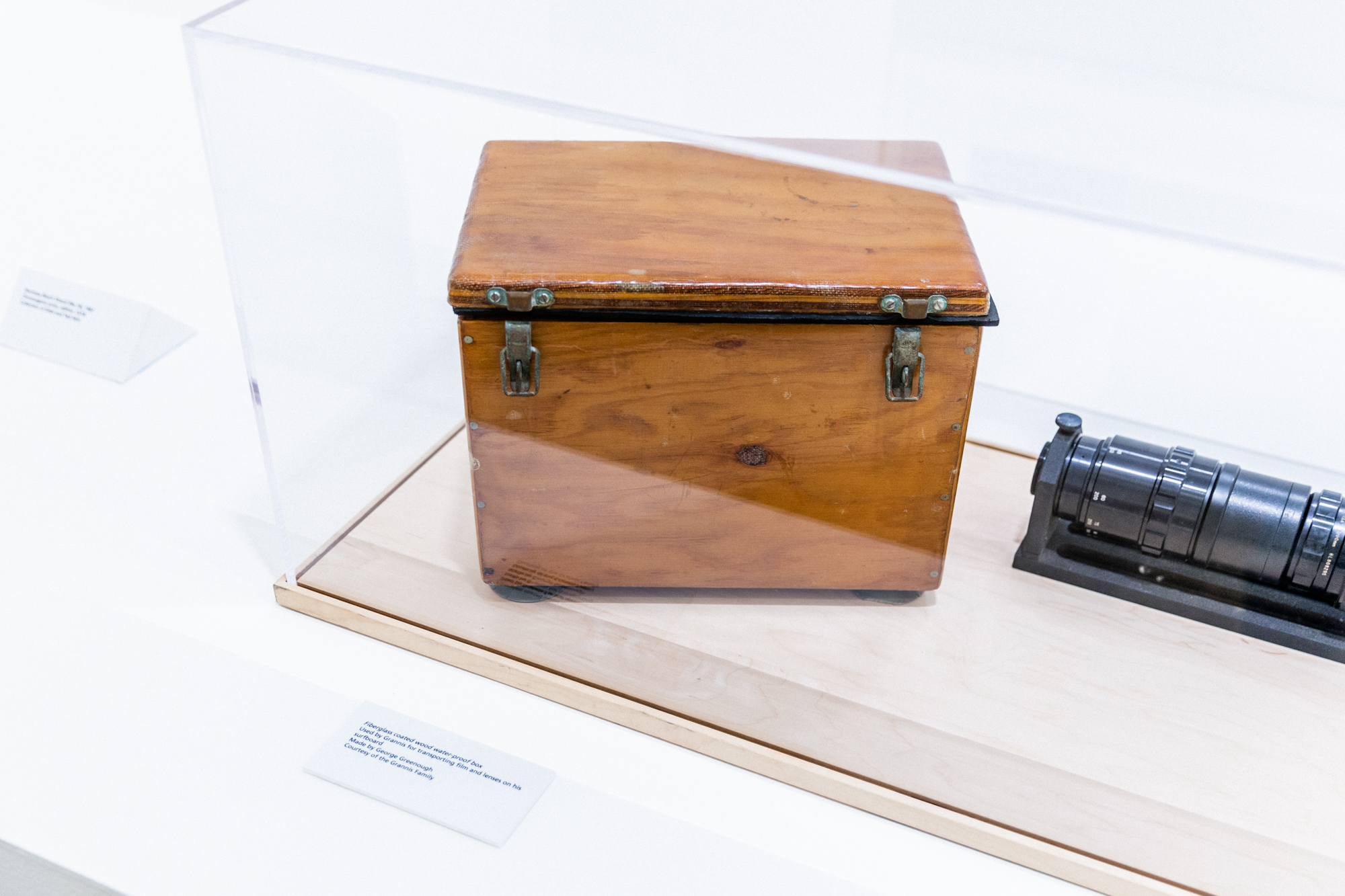
The box.
“I grew up with all this,” he said. “You know, this is what I lived. My dad and I would set up on the beach, shooting Sunset Beach or wherever. He’d use a long lens and I’d shoot with a shorter one, often times getting different angles of the same wave.”
“That shot over there,” he said pointing to a notable photo of a wood-paneled house on the strip of Hermosa Beach, “that’s outside of our house on 22nd Street. It’s funny, Hermosa is just a dumpy beach break but all these famous surfers would come to hang out and get shot by my dad. These photos are great, they’re the ones the gallery picked. In a storage facility in West Hollywood, there are over 40 thousand negatives that have never been seen. And that’s just in surfing. He also started Hangliding Magazine and Kitesurfing Magazine. I don’t even know what to do with those,” he laughed.
Those negatives are an important piece of surfing history. Hopefully, one day, they’re unearthed and sorted through. What may have been considered unremarkable by LeRoy then, today, would be illustrative of a time before surfing became refined, cleanly shaven by social media and censored by the World Surf League.
A time when surfing was truly a renegade hobby purveyed by beautiful layabouts keeping their lifestyle alive.
The show, “Cult of Culture”, is at the Long Beach Beach Museum of Art and is open to the public until April 21st. If you have the time or are in the area, we recommend checking it out. Head here for more information.




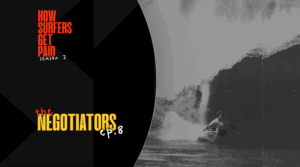
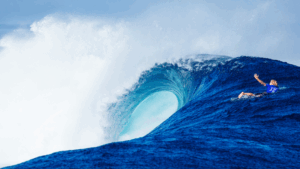
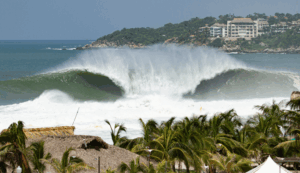







Comments
Comments are a Stab Premium feature. Gotta join to talk shop.
Already a member? Sign In
Want to join? Sign Up